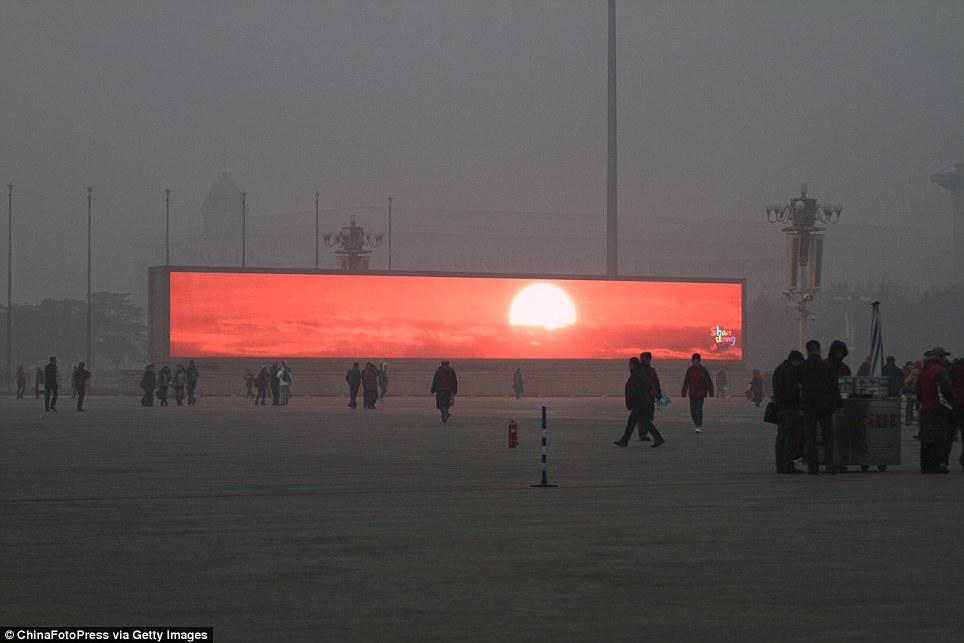The Chinese government has set an ambitious new goal of 17.8GW of new installed solar capacity for this year. Can they reach it, and if so, what does it mean for the global solar industry?
China’s National Energy Administration (NEA), has set a new PV target for 2015, which amounts to a whopping 27% more than the 2014 target of 14GW. Also last month, it was announced that the last of Beijing’s four major coal-fired power plants will completely shut down. China Huaneng Group Corporation’s 845-megawatt power plant will close in 2016. Worldwide and domestic outrage over air-quality account for one reason for the new and ambitious moves to expand renewable energy development, but major economic factors are at play as well.
Last year, President Obama and Chinese President Xi Jinping, announced “Historic” CO2 reduction plans that would see the Chinese carbon emissions peak “around 2030” and then level out or begin to decline. President Xi also promised that by then, 20 percent of China’s energy will be renewable. Many question how effective this policy will be, as China’s emissions continue to skyrocket. Also, with the Chinese governments dictatorial authority over energy policy, why will it take so long?

For better or worse, Chinese energy policy has generally been coherent, well organized and nimbly executed. When the nation required more energy to power it’s meteoric rise as the world’s industrial powerhouse, it needed only to proclaim that new coal-fired power plants be built, unhindered by any of the types of environmental debates held in democratic governments. By the same token, those plants can be shut down and replaced by cleaner gas-fired plants and new solar generation just as quickly, without any pushback from advocates of the “free market.”
Melanie Hart, a Policy Analyst on China Energy and Climate Policy at the Center for American Progress wrote in 2012: “Those policies are often difficult to parse because China’s economic system is not like that of the United States. It is a non-market economy with a top-down, command-and-control energy planning process that is often nontransparent with even more opaque interactions between the central government in Beijing and the provincial and local governments when these policies are implemented.” Hart was writing at that time about the trade dispute over China dumping low-cost solar panels in the U.S. market and the effect it was having on fledgeling American manufacturers.
Not only has China gained global dominance in Solar manufacturing, but it used its massive, unregulated coal plants to achieve that dominance. Hart pointed out three years ago that: The problem is China is particularly good at making things cheaply. At the lower end of the value chain, that is primarily due to the country’s low labor costs and massive supply chains. Also advantageous are China’s lax labor, safety, health, and environmental standards. At the higher end, that is often because the Chinese government provides generous subsidies and other forms of support for high-technology research, development, and commercialization. Low-cost Chinese manufacturing plays a large role in driving prices down for a wide range of products, including renewable energy technologies. Chinese manufacturing also plays a large role in pricing some U.S. manufacturers out of business, with many of those manufacturers claiming that the “China price” is driven by Chinese government intervention rather than natural market forces. If the Chinese government is intervening in a way that breaks trade rules then that type of rule breaking should be remedied in some way.”
The U.S. government has finally set tariffs on Chinese panels, but the measures are probably too little, too late. China has externalized the environmental costs of gaining industrial dominance (including the solar industry) by recklessly adding to global air and water quality problems through the construction of so many new coal-fired power plants. However, China may have been its own worst enemy. Despite the popular factoid that states “China builds a new coal fired power plant every week,” growth in demand for new generation is slowing, due to a contraction of the Chinese economy. Coal-fired capacity is over-built, and yet they have continued to build more plants. Now, their citizens are suffering from the governments environmental recklessness, their economy is in decline, and their access to US markets has been limited. The new, ambitious goal for solar installation may be less about forward looking vision, and more about damage control.
Regardless of the motivations behind the rapid movement toward a solar economy, the new solar push is a win/win situation all around. If the U.S. tariff does have an impact on the Chinese solar industry, the increased domestic demand will take up the excess supply, and hopefully, the Chinese people will begin to see a bright sunrise in clearer, less smoggy skies.






